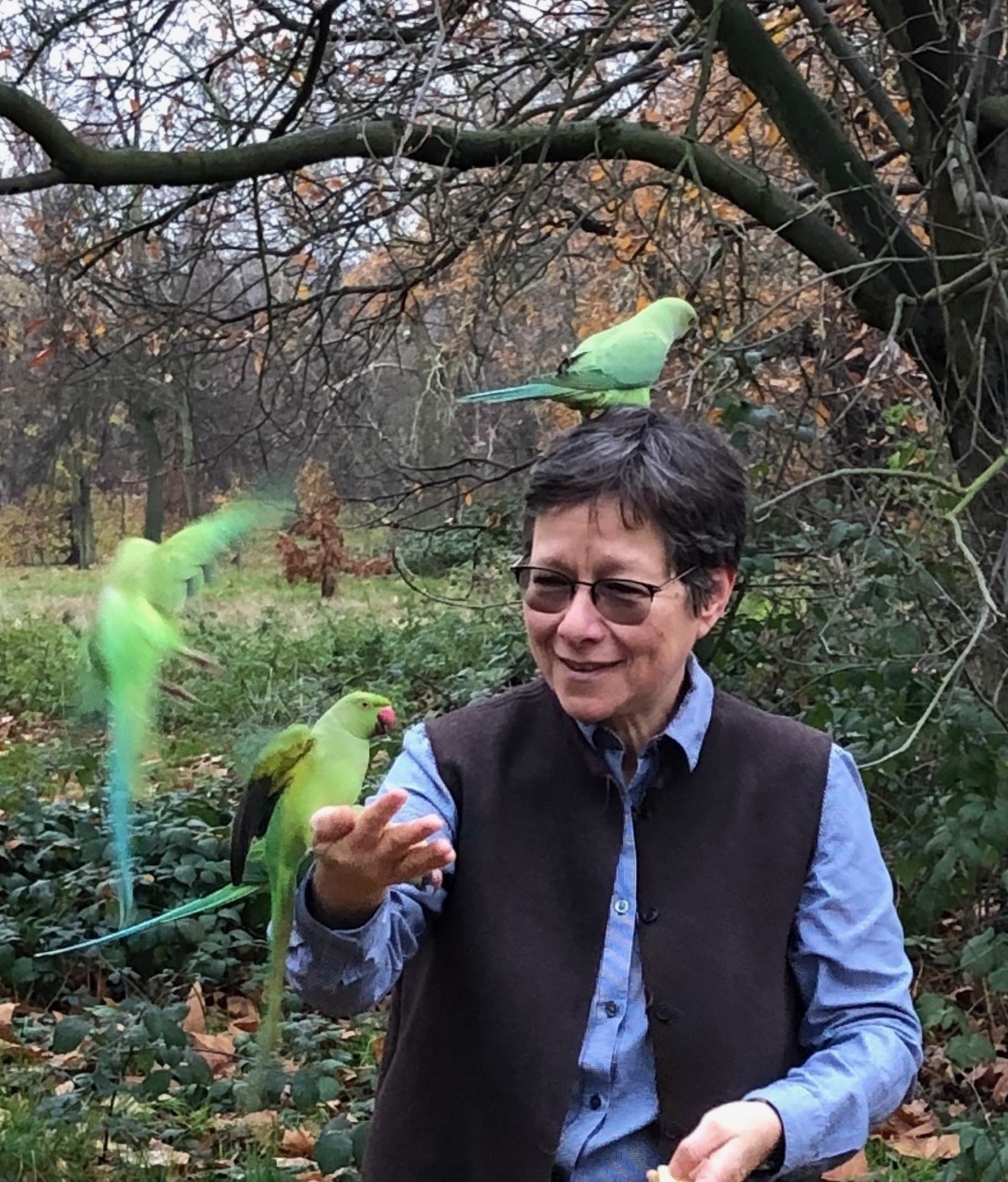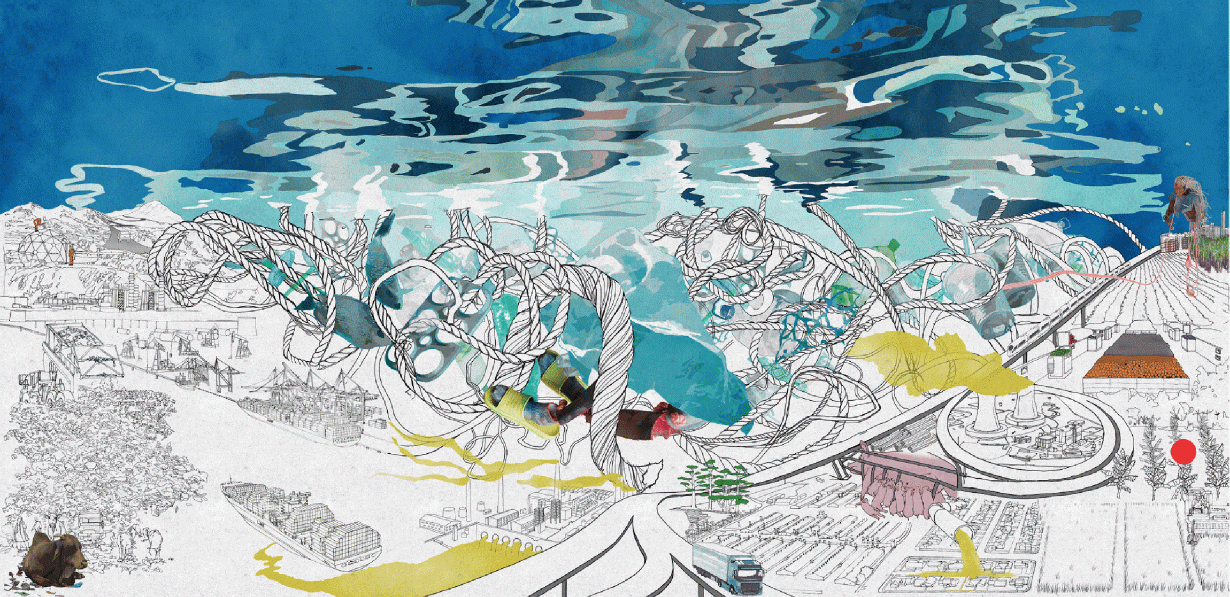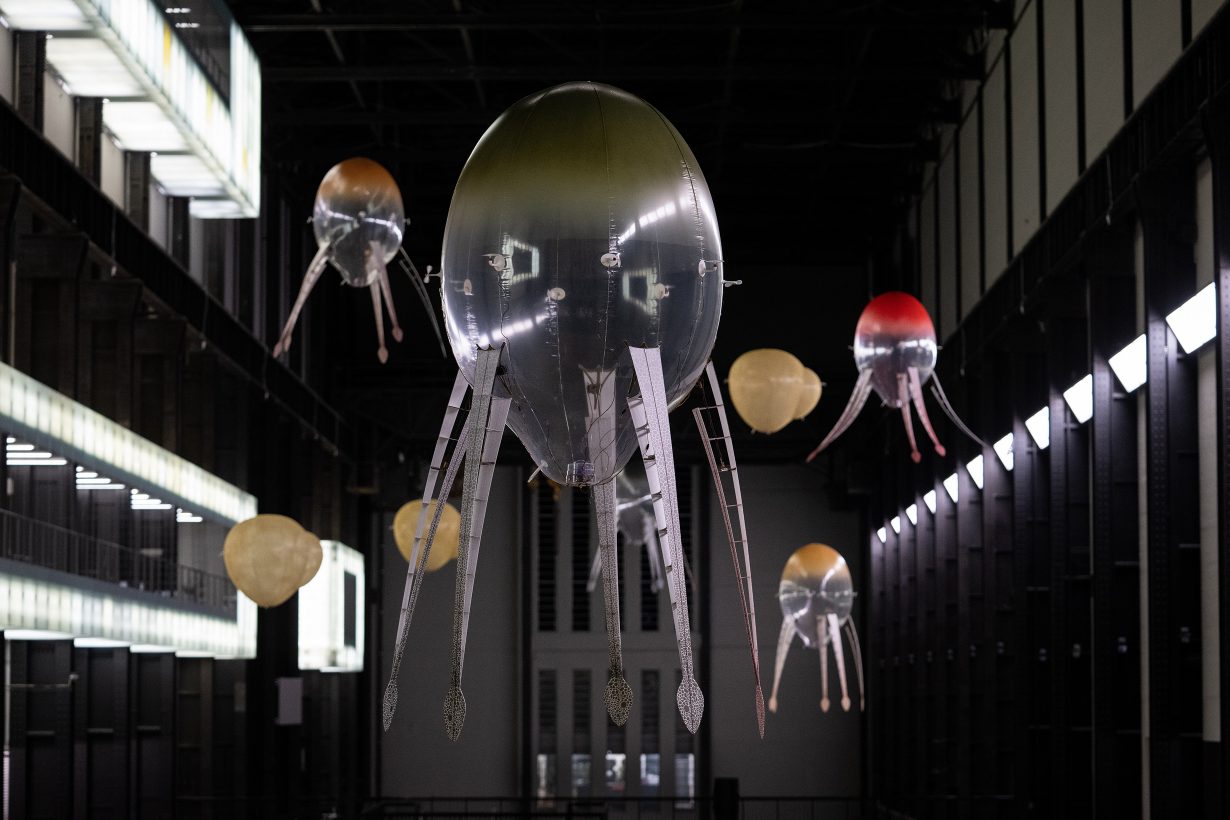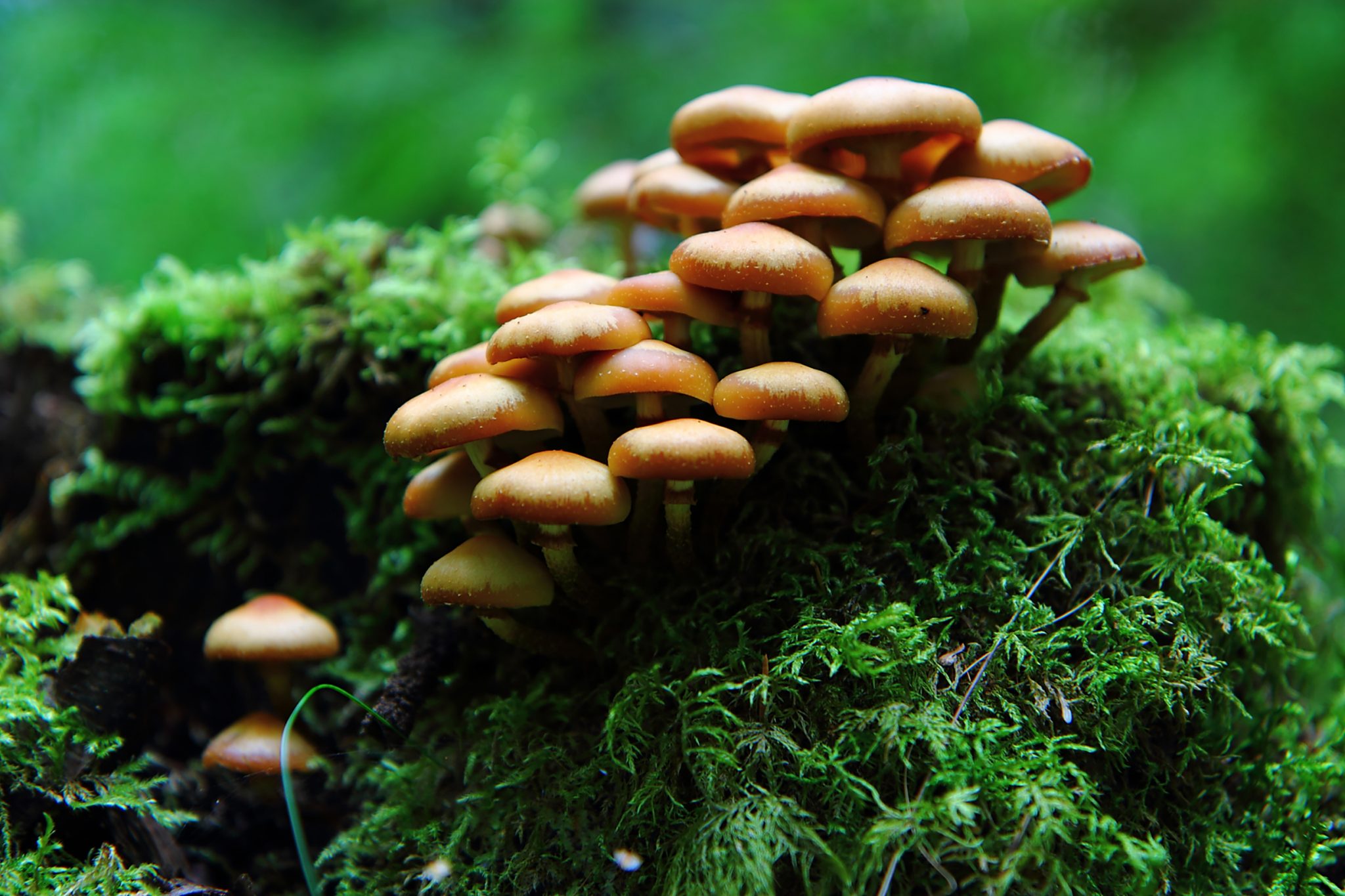Through her writings and the collaborative curatorial platform Feral Atlas, the anthropologist is offering new ways of imagining – and representing – our relationship to nature
The ideas of anthropologist Anna L. Tsing have not only entered the artistic discourse but are in the process of reshaping it. In books including the vastly influential The Mushroom at the End of the World (2015), which has for a protagonist the matsutake mushroom, Tsing proposes a way of seeing the world that demolishes the boundaries separating human ‘culture’ from nonhuman ‘nature’. By describing how people are inextricably bound into the environments they inhabit, she illustrates how we might learn to live on a damaged planet. That the world cannot wholly be understood from a unified human perspective has obvious ramifications in the field of art. Feral Atlas – the research platform that Tsing cofounded with Jennifer Deger, Alder Keleman Saxena and Feifei Zhou – responds to this crisis by experimenting with new ways of telling stories about our ‘more-than-human Anthropocene’. More widely, Tsing’s influence is apparent in the proliferation of artworks that aspire to ‘decentre’ the human or that propose new alliances across the convenient fictions of self, nation and species. These are the foundations for an aesthetics of art in the era of ecological catastrophe.

ArtReview In your book Friction [2004], which sprang from your work in a region of Indonesia suffering deforestation, you describe a meeting with a tribal elder in which he asked you to intervene directly with President Suharto. After you explain that anthropologists don’t have that kind of political influence, he suggests that it is your responsibility instead to put a ‘hair in the flour’. Could you explain that metaphor and how it has shaped your own relationship to power?
Anna L. Tsing In Indonesia it is traditional to make rice cakes to appease the spirits, who can partake of their beautiful smell. So if you think that the national government exists in similar relation to the Meratus people as the spirit world – as an inescapable force over their lives with whom it is impossible to communicate directly – then to put a hair in the cakes’ flour is to exploit a weak point in the system that connects them to it.
I teach at a university in the United States, which brings constraints. But I’m willing to do that, in part, because it allows me to participate in the imagination of alternative visions that might make cracks in the apparatus of power, which is not quite the same as smashing it. Some of my colleagues think we should just stand up and denounce the system. But anthropology is one of the least powerful disciplines in the academy, and so denouncing is not enough unless you’ve figured out a channel through which your denunciations might carry traction. I fear that no one will listen to our denouncements unless we make them beautiful. It might be part of the work of writers and artists to invest critical work with this kind of traction: to put a hair in the flour.
AR You have studied sites of environmental catastrophe – from the diminished forests of Oregon to the frontiers of extractive capitalism in Indonesia – and described the unexpected alliances that emerge from the ruins. They are figured as sites of destruction but also of resistance and creative potential. These zones are characterised by a force you call ‘friction’.
ALT Sometimes people interpret friction as only meaning conflict, but it is also a creative force. I think of rubbing two sticks to make fire, or the friction that creates the traction between wheel and road that pushes a vehicle forward. That friction generates motion and change, and it’s a useful way of thinking about how the political cultures and worldmaking projects by which we are surrounded don’t operate independently. Instead, they are always rubbing up against each other. Clearly, those processes can have catastrophic effects but they can also make possible new formations of power. You can’t know in advance what will happen.

AR Do you consider the transdisciplinary work of Feral Atlas to exist in a comparable ‘zone of awkward engagement’?
ALT It is so important to work across different forms of knowledge-formation and allow them to interact without trying to create what [sociologist] John Law calls a ‘one-world world’, a homogeneous space in which everything fits perfectly together. This also allows us to consider how knowledge of all kinds, including Indigenous or traditional forms of knowledge, might rub up against each other to create new effects, rather than stand alone as separate planets.
AR These interactions between diverse forms of knowledge – or communities, or species – aren’t figured as necessarily harmonious. Your work as a writer and with Feral Atlas instead foregrounds difference, translation and the friction that arises from those encounters. You’ve described those meeting points as ‘assemblages’.
ALT I like the term ‘assemblage’ as it’s used in ecology. In that context it describes all the plants, soils and other things that just happen to be in a particular place. It doesn’t assume in advance to know the relationships between them, and so it forces you to figure them out rather than simply apply a predetermined logic. Are these two plants in some form of mutualist relationship, or is one a parasite on the other? We don’t know, and we shouldn’t presume to know what the effects of their rubbing up against each other might be.
I wanted to create a school like that, in which it was possible to study the places at which different cultures and politics come together without judging their relationship or their effects in advance. Those interactions between diverse political and cultural projects create the friction we were talking about, and often they have unexpected and unpredictable effects that cannot simply be reduced to a predetermined algorithm.

AR In The Mushroom at the End of the World you advocate for the importance of descriptive work, of observing and recording. Description, like illustration, has a poor reputation in both the arts and sciences. Why is description so denigrated, and why is it so important now?
ALT A false dichotomy between description and theory has really gotten in our way. It reduces description to merely mechanical work and makes theory transcendent, as if it were a religious commitment. Description is important because it gives traction to a theoretical perspective. To propose theory without description is to ask for the reader’s blind faith.
Let’s take a problem like the Anthropocene. If we can’t describe the patches through which our environmentally troubled earth is emerging, then we can’t have any clue what it is we’re studying. That work is theoretical work, and without it we are in deep trouble. Feral Atlas is a critically engaged project of description.
In the process it makes theoretical points, and so I’m interested that you tied the problem of description to that of illustration. We were very careful with Feral Atlas not to use art to exemplify theory, to show what’s already known. Instead the art does conceptual work in the same vitalising way that we’re ascribing to description.
AR So description or illustration might allow us to think about objects, like the Anthropocene, that are otherwise too vast to conceptualise. Is it also a way of training ourselves to see that which we are conditioned to ignore?
ALT When I was in Oregon working on my project about mushrooms, I realised that the foresters simply couldn’t see the mushrooms that were proliferating in their forest. They were trained to see only board-feet of timber, even though these mushrooms became at certain points commercially more valuable than the timber. The foresters were stuck on an assignment they’d been given at the start of the twentieth century.
I am committed to moving beyond the modernist vision practices that we have all been schooled in. Because in Oregon it wasn’t just the mushrooms that were invisible to the authorities, it was the Southeast Asian refugees who were living in the forest to gather them. It seems to me that figuring out what’s going on around us is a good first step towards figuring out how to go forward.

AR How might changing the way we see the world make it possible for us to, as the subtitle of your most recent book puts it, live in the ruins?
ALT Stories of environmental collapse can paralyse people, but they can also open us up to the world and foster new sensibilities. Take for example Feifei Zhou’s drawings for Feral Atlas, which conjoin different historical references within a single landscape. That’s a new modality of seeing that might make it possible for the viewer to notice things in their regular world that were previously invisible to them.
I’ve thought a lot about the affect that Feral Atlas aims to conjure, and I’ve settled on ‘wonder in the midst of dread’. Rather than being suffocated by the terrible things that are happening, that wonder might stimulate the curiosity we need to work through those problems.
AR You are the coeditor of an anthology of essays entitled Arts of Living on a Damaged Planet (2017), which is organised around two wonderful and dreadful types: ghosts and monsters. How are they useful in terms of thinking about the Anthropocene?
ALT We are surrounded by ghosts. Consider those plants that have lost the animals that distribute their seeds, meaning they are no longer able to reproduce. They’re still clinging on, but there is no prospect of survival. They have one foot in the world of ghosts. This haunting is not just metaphorical, it is a material form of ghostliness.

In terms of monsters, biology until 30 years ago was stuck on the idea that every organism simply reproduced itself in isolation from the environment and from history. Nobody thinks that anymore. We know now that organisms and their environments are interacting all the time and across species in ways that affect the next generation. In the twentieth century these interspecies interplays, and the chimeras of various sorts they produce, would have been considered monstrous. But this switching across species is now accepted in professional biology and the idea is creeping into the vernacular. All around us are beings that can’t possibly be understood independently of the multiple kinds of organisms that partake in them.
AR How can art reflect this shift?
ALT Art can foster the curiosity and openness that generates the new sensibility we need to work with and through these problems. I’m delighted by all the experiments that go on in the arts. I think of Anicka Yi’s interspecies models – part fungi, mammal, plant, bacteria, robot – floating around Tate Modern, interacting with visitors. That can change what we think life is.
ArtReview’s Power 100 – the annual ranking of the most influential people in art – is out now
